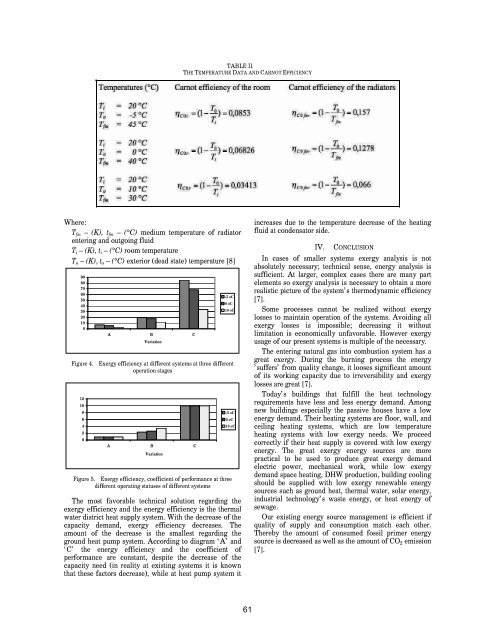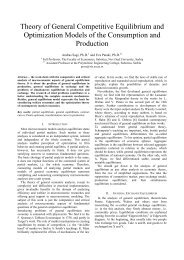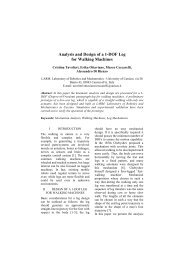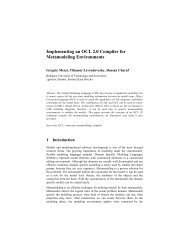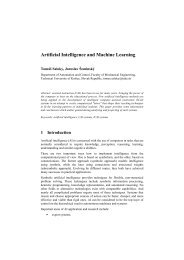Final Program EXPRES 2012 - Conferences
Final Program EXPRES 2012 - Conferences
Final Program EXPRES 2012 - Conferences
- No tags were found...
Create successful ePaper yourself
Turn your PDF publications into a flip-book with our unique Google optimized e-Paper software.
TABLE II.THE TEMPERATURE DATA AND CARNOT EFFICIENCYWhere:T fm – (K), t fm – (°C) medium temperature of radiatorentering and outgoing fluidT i – (K), t i – (°C) room temperatureT o – (K), t o – (°C) exterior (dead state) temperature [8]9080706050403020100A B CVariation-5 oC0 oC10 oCFigure 4. Exergy efficiency at different systems at three differentoperation stages121086420A B CVariationFigure 5. Energy efficiency, coefficient of performance at threedifferent operating statuses of different systems-5 oC0 oC10 oCThe most favorable technical solution regarding theexergy efficiency and the energy efficiency is the thermalwater district heat supply system. With the decrease of thecapacity demand, exergy efficiency decreases. Theamount of the decrease is the smallest regarding theground heat pump system. According to diagram ‘A’ and‘C’ the energy efficiency and the coefficient ofperformance are constant, despite the decrease of thecapacity need (in reality at existing systems it is knownthat these factors decrease), while at heat pump system itincreases due to the temperature decrease of the heatingfluid at condensator side.IV. CONCLUSIONIn cases of smaller systems exergy analysis is notabsolutely necessary; technical sense, energy analysis issufficient. At larger, complex cases there are many partelements so exergy analysis is necessary to obtain a morerealistic picture of the system’s thermodynamic efficiency[7].Some processes cannot be realized without exergylosses to maintain operation of the systems. Avoiding allexergy losses is impossible; decreasing it withoutlimitation is economically unfavorable. However exergyusage of our present systems is multiple of the necessary.The entering natural gas into combustion system has agreat exergy. During the burning process the energy’suffers’ from quality change, it looses significant amountof its working capacity due to irreversibility and exergylosses are great [7].Today’s buildings that fulfill the heat technologyrequirements have less and less energy demand. Amongnew buildings especially the passive houses have a lowenergy demand. Their heating systems are floor, wall, andceiling heating systems, which are low temperatureheating systems with low exergy needs. We proceedcorrectly if their heat supply is covered with low exergyenergy. The great exergy energy sources are morepractical to be used to produce great exergy demandelectric power, mechanical work, while low exergydemand space heating, DHW production, building coolingshould be supplied with low exergy renewable energysources such as ground heat, thermal water, solar energy,industrial technology’s waste energy, or heat energy ofsewage.Our existing energy source management is efficient ifquality of supply and consumption match each other.Thereby the amount of consumed fossil primer energysource is decreased as well as the amount of CO 2 emission[7].61


